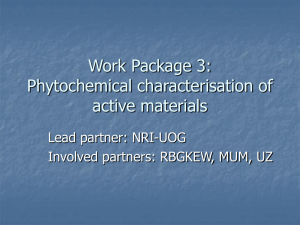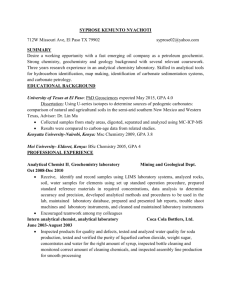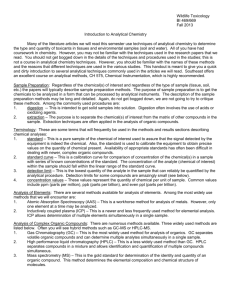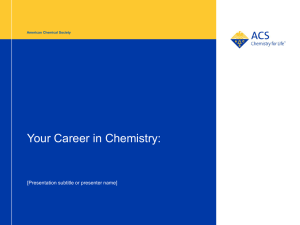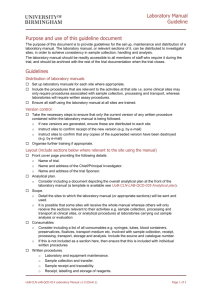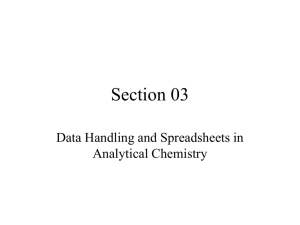Christian`s Analytical Chemistry
advertisement
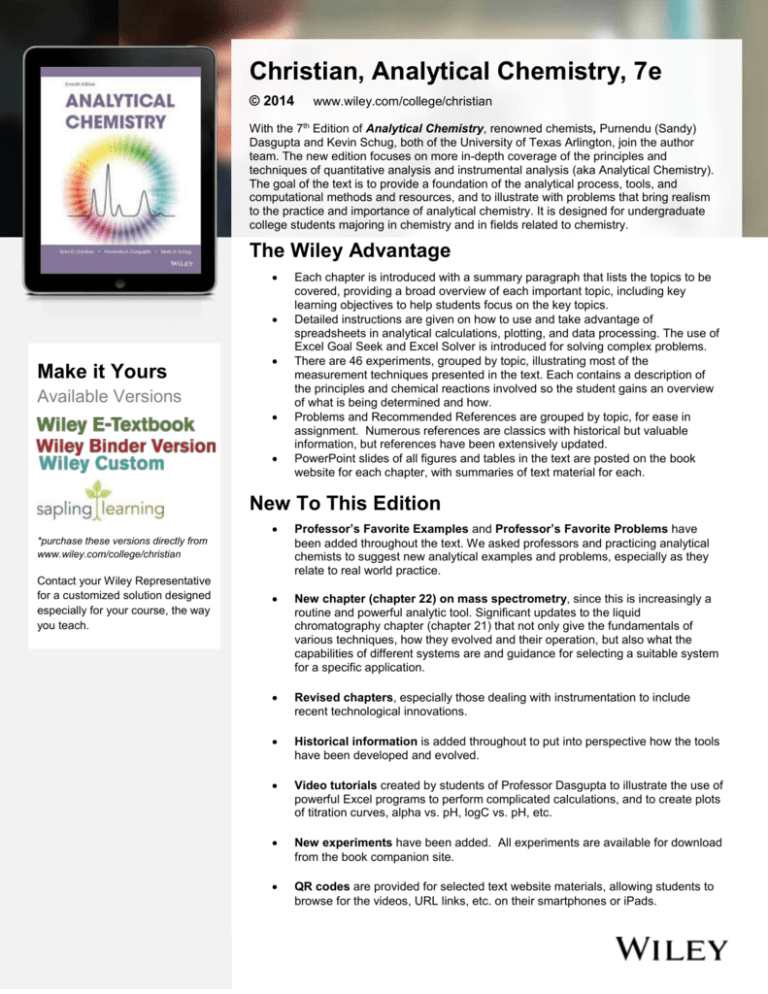
Christian, Analytical Chemistry, 7e © 2014 www.wiley.com/college/christian With the 7th Edition of Analytical Chemistry, renowned chemists, Purnendu (Sandy) Dasgupta and Kevin Schug, both of the University of Texas Arlington, join the author team. The new edition focuses on more in-depth coverage of the principles and techniques of quantitative analysis and instrumental analysis (aka Analytical Chemistry). The goal of the text is to provide a foundation of the analytical process, tools, and computational methods and resources, and to illustrate with problems that bring realism to the practice and importance of analytical chemistry. It is designed for undergraduate college students majoring in chemistry and in fields related to chemistry. The Wiley Advantage Make it Yours Available Versions Each chapter is introduced with a summary paragraph that lists the topics to be covered, providing a broad overview of each important topic, including key learning objectives to help students focus on the key topics. Detailed instructions are given on how to use and take advantage of spreadsheets in analytical calculations, plotting, and data processing. The use of Excel Goal Seek and Excel Solver is introduced for solving complex problems. There are 46 experiments, grouped by topic, illustrating most of the measurement techniques presented in the text. Each contains a description of the principles and chemical reactions involved so the student gains an overview of what is being determined and how. Problems and Recommended References are grouped by topic, for ease in assignment. Numerous references are classics with historical but valuable information, but references have been extensively updated. PowerPoint slides of all figures and tables in the text are posted on the book website for each chapter, with summaries of text material for each. New To This Edition Professor’s Favorite Examples and Professor’s Favorite Problems have been added throughout the text. We asked professors and practicing analytical chemists to suggest new analytical examples and problems, especially as they relate to real world practice. New chapter (chapter 22) on mass spectrometry, since this is increasingly a routine and powerful analytic tool. Significant updates to the liquid chromatography chapter (chapter 21) that not only give the fundamentals of various techniques, how they evolved and their operation, but also what the capabilities of different systems are and guidance for selecting a suitable system for a specific application. Revised chapters, especially those dealing with instrumentation to include recent technological innovations. Historical information is added throughout to put into perspective how the tools have been developed and evolved. Video tutorials created by students of Professor Dasgupta to illustrate the use of powerful Excel programs to perform complicated calculations, and to create plots of titration curves, alpha vs. pH, logC vs. pH, etc. New experiments have been added. All experiments are available for download from the book companion site. QR codes are provided for selected text website materials, allowing students to browse for the videos, URL links, etc. on their smartphones or iPads. *purchase these versions directly from www.wiley.com/college/christian Contact your Wiley Representative for a customized solution designed especially for your course, the way you teach. Christian, Analytical Chemistry, 7e ©2014 www.wiley.com/college/christian Resources and Support Instructor & Student Companion Sites are available at www.wiley.com/college/christian and include the following resources: Materials on the website include supplemental materials for different chapters that expand on the abbreviated presentations in the text. Following is a list of the types of materials on the website: o Videos o URLs o PPT slides o Excel spreadsheets o Experiments o Certain textual material dealing with specific applications of analytical chemistry have been moved entirely to the website (i.e. chapters 25 (Clinical chemistry) and chapter 26 (Environmental Sampling and Analysis) and Chapter G (Genomics and Proteomics). SOLUTIONS MANUAL A saleable comprehensive solutions manual is available for use by instructors and students in which all problems are completely worked out and all questions are answered. Answers for spreadsheet problems, which include the spreadsheets, are given on the text website. Answers to all problems are given in Appendix F. Wiley is pleased to offer Sapling Learning with our Chemistry titles. Sapling Learning offers interactive homework and instruction designed to improve student performance and outcomes. Its software is designed to offer students highly targeted instructional feedback and coaching, and includes rich tutorial questions. With Sapling Learning instructors can author and edit their own question content. Sapling Learning is known for its strong customer service (Ph.D. Chemists on staff) who also work with instructors to create and customize problem content. Sapling Learning is completely textbook independent and does not contain an eBook. To learn more information, visit: www.saplinglearning.com Table of Contents Ch. 1 Analytical Objectives, or: What Analytical Chemists Do Ch. 2 Basic Tools and Operations of Analytical Chemistry Ch. 3 Statistics and Data Handling in Analytical Chemistry Ch. 4 Good Laboratory Practice: Quality Assurance and Method Validation Ch. 5 Stoichiometric Calculations: The Workhorse of the Analyst Ch. 6 General Concepts of Chemical Equilibrium Ch. 7 Acid–Base Equilibria Ch. 8 Acid–Base Titrations Ch. 9 Complexometric Reactions and Titrations Ch. 10 Gravimetric Analysis and Precipitation Equilibria Ch. 11 Precipitation Reactions and Titrations Ch. 12 Electrochemical Cells and Electrode Potentials Ch. 13 Potentiometric Electrodes and Potentiometry Ch. 14 Redox and Potentiometric Titrations Ch. 15 Voltammetry and Electrochemical Sensors Ch. 16 Spectrochemical Methods Ch. 17 Atomic Spectrometric Methods Ch. 18 Sample Preparation: Solvent and SolidPhase Extraction Ch. 19 Chromatography: Principles and Theory Ch. 20 Gas Chromatography Ch. 21 Liquid Chromatography and Electrophoresis Ch. 22 Mass Spectrometry Ch. 23 Kinetic Methods of Analysis Ch. 24 Automation in Measurements Available online: Ch. 25 Clinical Chemistry Ch. 26 Environmental Sampling and Analysis Ch. G Century of the Gene—Genomics and Proteomics: DNA Sequencing and Protein
